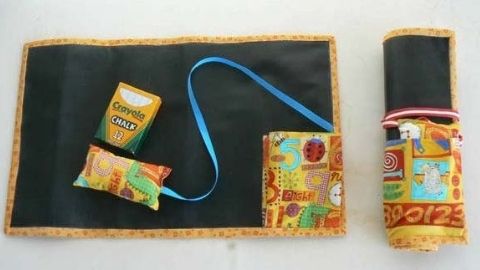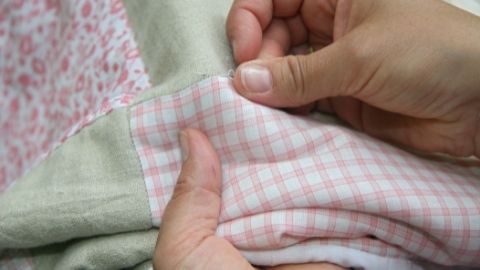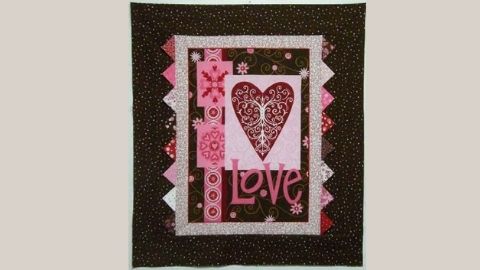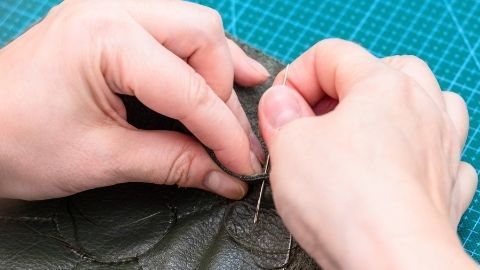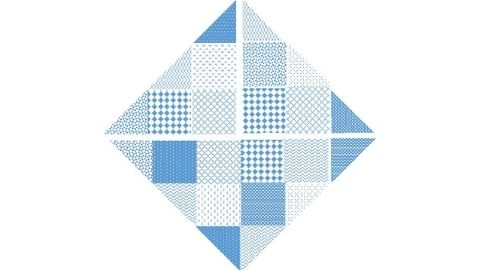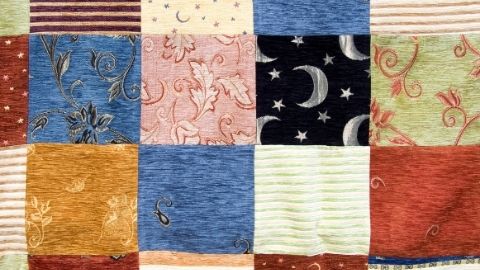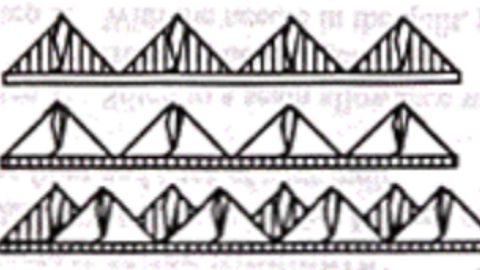Half Square Triangles
State 4-H Leadermete April 2008
Sewing Project Skill: Construct half square triangles from two squares
Life Skills: Learning to learn, making decisions, math literacy
Level: 1B
The triangle is a basic quilt block shape. Half-square triangles are easily made from two squares and cut on the diagonal from corner to corner. When cut the diagonal line is a true bias edge which stretches and distorts very easily. Sewing the bias seam before cutting the square into triangles prevents this problem. To determine what size the square needs to be cut, add 7/8" to the size of the finished square. For example, for two 3" finished half-square triangles, cut two 3-7/8" fabric squares from two different colors of fabric.
Half square triangle construction:
1. CUT two 3 7/8" squares, one light and one dark.
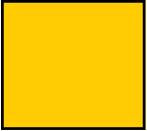
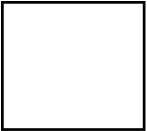
2. MARK a diagonal line from corner to corner on the back of one of the squares. With right sides together and raw edges even, place one square on top of the other.
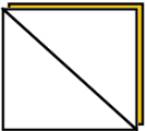
3. STITCH a scant 1/4" seam on both sides of the diagonal line through both layers of fabric. PRESS stitched unit flat. Quilting clue — Pressing is an important part of quilting. Press each seam flat on the stitching line on both sides to set the stitches.
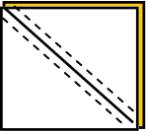
4. CUT on the diagonal line to make two half-square triangle units.

5. PRESS seam toward the darker fabric, from the right side.

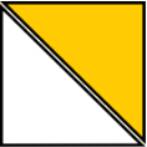
6. Place the diagonal line of the ruler over the seam line to check for squareness The unfinished block size should measure 3 1/2"
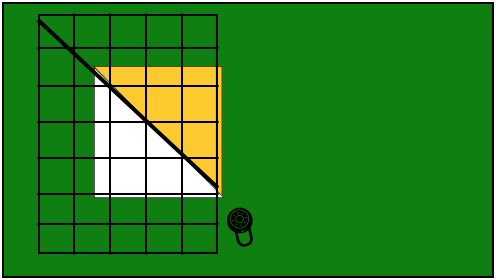
Broken Dishes Block
Broken Dishes is a simple quilt block made from half-square triangles arranged in a four patch. The squares are arranged at different angles to create the effect of broken dishes. It’s popularity dates back to the 1790’s and is one of the most common blocks in quilt history. It is a fun block to make with all different colors of fabrics or of just two colors.
Supplies needed: 4 half-square triangle blocks
1. ARRANGE the four half-square triangle blocks into the Broken Dishes block.

2. SEW two of the half-square triangles together—using a 1/4" seam—forming a unit. Repeat with the other two half square triangles forming the 2nd unit. Quilting clue—sew all seams with a scant 1/4" seam allowance. Use 12 stitches per inch or 2.5 on the stitch length regulator. Quilting seams which intersect do not need to be backstitched.

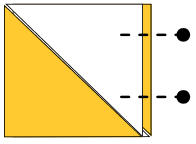
3. PRESS the seam allowance toward the dark fabric. Quilting clue —Pressing is an important part of quilting. Press each seam flat on the stitching line on both sides to set the stitches before pressing the seam to the side.
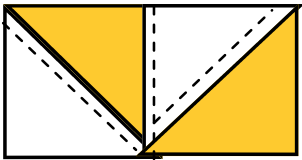
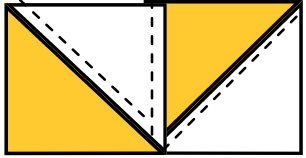
4. BUTT the seams of the 2 units together. PIN on each side of the seam to prevent the intersection from moving. SEW the two units together.
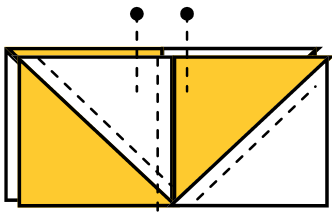
5. PRESS seams, one seam in one direction and the other seam in the opposite direction. This helps make the center intersection lie flatter.
Quilting clue—’Magic Twist’: Before pressing center seam on blocks, hold the block in both hands about 1” from the center. Gently twist in opposite directions, opening up a few stitches in the seam allowance.
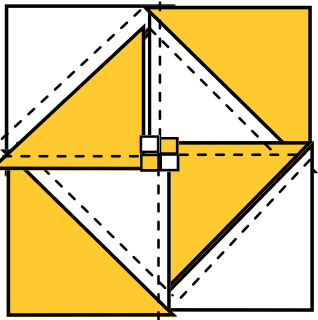
6. Your block is finished ready to create a quilt.

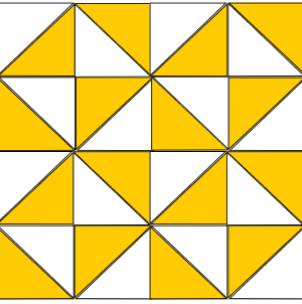
Pinwheel Block
The Pinwheel is a simple quilt block made from half-square triangles arranged in a four patch. The squares are arranged at different angles to create the effect of a pinwheel. It’s popularity dates back to the 1790’s and is one of the most common blocks in quilt history. It is a fun block to make with all different colors of fabrics or of just two colors.
Supplies needed: 4 half-square triangle blocks
1. ARRANGE the four half-square triangle blocks into the Pinwheel block.
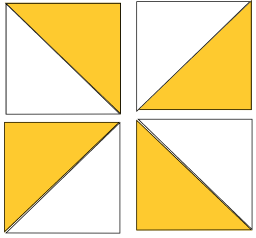
2. SEW two of the half-square triangles together—using a 1/4" seam—forming a unit. Repeat with the other two half square triangles forming the 2nd unit. Quilting clue—sew all seams with a scant 1/4" seam allowance. Use 12 stitches per inch or 2.5 on the stitch length regulator. Quilting seams which intersect do not need to be backstitched.

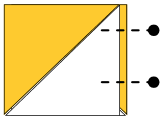
3. PRESS the seam allowance toward the dark fabric. Quilting clue —Pressing is an important part of quilting. Press each seam flat on the stitching line on both sides to set the stitches before pressing the seam to the side.

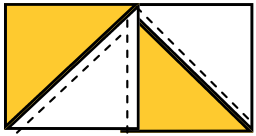
4. BUTT the seams of the 2 units together. PIN on each side of the seam to prevent the intersection from moving. SEW the two units together.
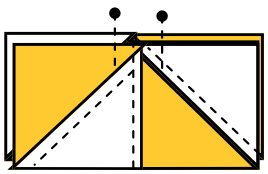
5. PRESS seams, one seam in one direction and the other seam in the opposite direction. This helps make the center intersection lie flatter.
Quilting clue—’Magic Twist’: Before pressing center seam on blocks, hold the block in both hands about 1” from the center. Gently twist in opposite directions, opening up a few stitches in the seam allowance.
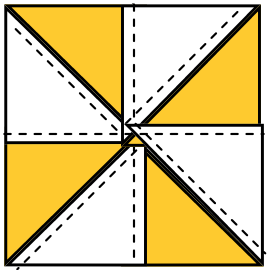
6. Your block is finished ready to create a quilt.
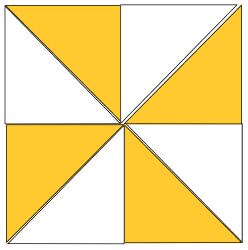
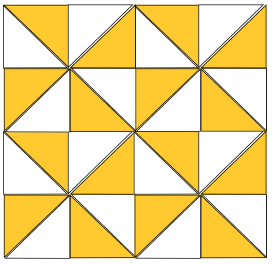
Authors
Debra Proctor, Wasatch County Extension Agent, FCS/4-H; Deonn Stott, Wasatch County 4-H Leader; Ronda Olsen, Uintah County Extension Agent, FCS/4-H
Related Research


 Utah 4-H & Youth
Utah 4-H & Youth
